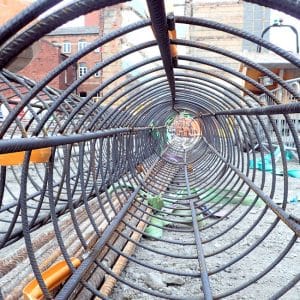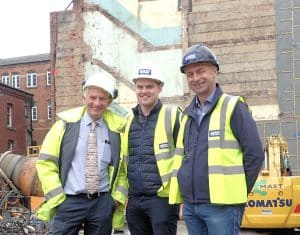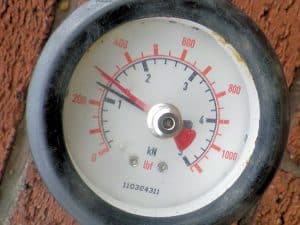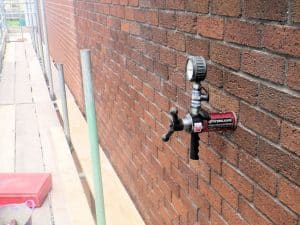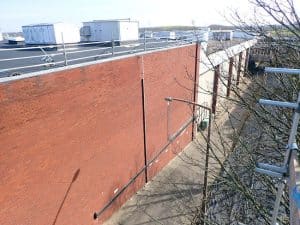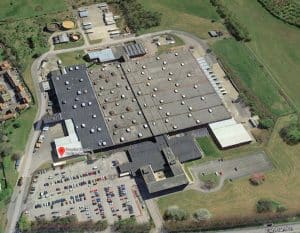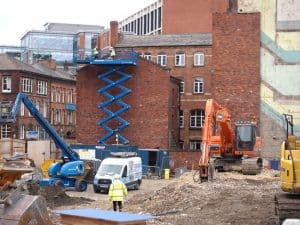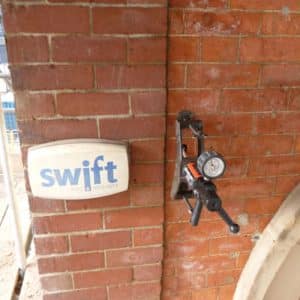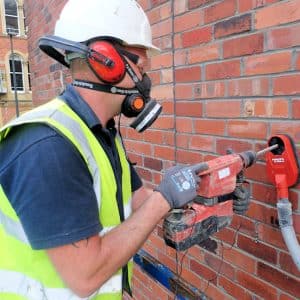Structural Repair FAQs
Questions commonly asked of our structural repair specialists
Our structural repair specialists have collated some of the queries that they commonly hear during the surveying and repair process. These provide clear answers to help you fully understand the process. There’s more information available on our structural survey, wall crack and masonry repair pages.
If you have your own question that you’d like our structural specialists to answer, please email it to us. We’ll respond as quickly as possible, and update this page with your Q and A! Alternatively call for further information Leeds 265 2752 York 566577 or Sheffield 224 5121
Also in this section
The main circumstance that requires a survey by our structural repair specialist is if you’ve noticed any issues with wall cracks, damaged pointing or bulging walls. It may be that another surveyor has raised the issue and you need clarification and a specification for effective and guaranteed repairs. We can help you there.
Every building needs to be assessed independently, enabling us to identify the most appropriate repair method. This will depend on the nature and extent of the problem, the age of the building and its construction and materials. Our surveys and recommendations are clearly laid out in easy-to-understand terms, so you’ll know exactly what we’re going to do and why!
In addition to our 3 decades of firsthand experience, all of our structural repair specialists undergo rigorous training and are approved and accredited by the Property Care Association. We’re trained Helifix engineers and Cintec approved – and our work is fully guaranteed too. Please check out the bio’s of our staff here, where you can read about their experience, skills and qualifications.
All the specialist work we do is carried out by our own trained technicians. They are directly employed by us. This means you get knowledge, skill and accountability working together to complete a perfect structural repair. Occasionally we need the help of selected sub-contractors to do less specialised work with our teams, including pointing, scaffolding and general masonry work. These contractors are carefully vetted and experienced people with a proven track record.
This depends on the extent and nature of the work. Our teams carry clean dusts sheets and will protect stairs and floors with coverings. However, very fine dust can travel quite far and if we’re removing old plaster inside a house, some dusting and cleaning may be inevitable –though we strive to keep things as clean as possible. If you’re worried or have any concerns, always speak to us before the work commences so we can accommodate for any specific wishes you may have.
Walls will tend to move outward due to wind pressures. This lateral movement is especially common in very old houses and those with high gable walls or rubble-filled stone walls. The movement can be stopped by provision of restraint at the upper and mid-point of the wall. This can involve a combination of work, ranging from straightforward restraint straps, though to complex stitching anchors and Helibeam, designed to stiffen and restrain the masonry. We use our own hybrid methods, plus the excellent Helifix and Cintec anchors systems. On-site testing ensures proven performance and all of our lateral restraint work is guaranteed.
These are known as pattress plates and are a feature of very many old and listed buildings. However, we have perfected our tie bar techniques so that the unsightly plates are rarely needed. Successful restraint of old stone walls via hidden tie bars is a speciality of ours. Depending on the construction material, structural repair will include resin bonded, Cintec anchors or Helifix sockfix type anchors installed from the internal face and invisible from outside the property.
This depends on the extent of the movement and the type of wall and ground conditions. However, we have helped many customers with this defect on domestic and commercial sites. Specialised strengthening and ground anchors can be suitable in many cases and our surveyor will be able to give you advice on the most appropriate solution. In some cases, rebuilding is inevitable, though often we have saved clients thousands by avoiding this and installing a remedial solution – a neat structural repair of the leaning wall problem. Ask about our Duckbill anchor solutions.
Crack-stitching involves provision of tensile strength across cracks in masonry to avoid the cracks opening again. It usually involves installation of several strands of Helifix helibar installed in separate positions, with one bar encapsulated in Helibond grout to each bed-joint. Masonry beaming using Helibeam involves a similar approach, however there are twin Helibars in each chance and these are bonded in-depth. They provide tensile strength and also improve bending resistance too, allowing masonry to act as a beam in a tangential and transverse direction. This means that they can span opening, strengthen weak lintels and be used to spread bearing stresses when combined with other structural work. Our Helifix trained surveyors have the skill and experience to specify methods efficiently and cost effectively.
We hope the above is helpful. If you need more information or have any concerns about structural repair please either call us on Leeds 265 2752 York 566577 or Sheffield 224 5121 or use our email contact page

Need advice or want to book a survey?
Further Reading
The blog posts and links below will also give you additional information on structural repairs, wall ties and cracks in walls.
Bricklayers are not remedial wall tie technicians
This past week I was involved in a remedial wall tie installation on a prestigious brand new building, which is not yet complete. Surprisingly the need for wall tie installation on new and fairly new buildings is more common than many would expect. Reasons for this include: new wall ties missed during the bricklaying… Continue reading
Guaranteed wall tie replacement – oh dear...
Last week I had the misfortune to be asked to check another wonky remedial wall tie installation. My client lives in Morley, Leeds and had his wall ties replaced about 12 years ago. His house is detached, brick-built, with large areas of external render. It is cavity wall insulated. He wants to decorate the render, … Continue reading
